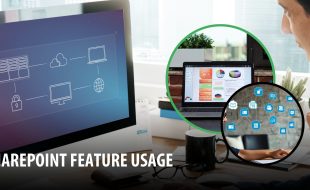Table Of Contents
Mobile Commons vs Action Network: A Comprehensive Comparison
Last Updated on: June 19th, 2025
Advocacy as a whole has gone through an innovative revolution. This revolution has transformed the way advocacy is conducted. Advocacy tools like Mobile Commons and Action Network are revolutionizing the way we engage with our communities.
However, both of these tools offer a unique perspective on the advocacy process. As a result, these play a crucial role for organizations, as they enable them to make the right decisions. However, understanding these nuances takes some guidance.
This is what this article will primarily do. Here, we will examine these two tools and explore their applications. Therefore, follow along to understand the fundamentals and the debate between the two.
Understanding These Software Arrays
Before we can start assessing the differences, we need to get the fundamentals right. This is essential as it will enable you to understand the context better, and for us to assist you with the subject.
Mobile Commons primarily specializes in text messaging or SMS and Multimedia Messaging Service or MMS for non-profit organizations. In a reductive sense, the software bears some resemblance to what a CRM does. It helps non-profit organizations to engage through messaging.
On the other hand, Action Network is a comprehensive platform primarily focused on online organizing and similar activities for non-profit organizations. Action Profit provides tools to these organizations that help them build websites, email lists, event pages, and more.
Both of these tools can be used in tandem by a non-profit organization to create better engagement plans for their campaigns. Here is a brisk overview of these two applications so that you can understand the uniqueness of these applications at a glance:
Mobile Commons
Here are some of the general features of Mobile Commons that you need to know:
- Provides a two-way communication platform for non-profit organizations to connect with their supporters using minimal resources.
- Offers advanced features like CRM integration, personalization, reporting, and dynamic segmentation.
- The application is designed with the needs of non-profit organizations in mind. Therefore, these allow specialized help to these organizations.
- Enables the organization to build one-on-one relationships with its supporters via texting. Therefore, helping the irgfanization drive the engagement high.
Action Network
Here are some of the general features of Action Network that you need to know:
- Primarily focuses on website building, email listing, and event page management.
- Allows users to connect directly to the organization without any intermediary that can interfere with the communication establishment.
- Offers features specifically tailored for non-profit organizations, including data management, fundraising, and email marketing, to drive engagement.
Mobile Commons vs Action Network: General Overview
The debate between choosing Mobile Commons or Action Network is more than just a preference for interface design; it’s a matter of matching a platform’s capabilities with an organization’s strategic goals.
Both platforms have carved out significant niches in advocacy, engagement, and fundraising, but they do so with differing approaches. Mobile Commons focuses on messaging campaigns, while the Action Network provides tools to meet the diverse needs of activists and organizations.
Mobile Commons prides itself on a robust mobile messaging platform that organizations can leverage for mass texting, allowing for personalized communication at scale.
Conversely, Action Network’s strength lies in its integrated toolset, which is designed for various actions, including petitions, fundraising, and event coordination.
Furthermore, when assessing Mobile Commons vs Action Network, it is essential to consider the user base and case studies. Both platforms boast a long list of prominent nonprofit clients and have been utilized in large, impactful campaigns, a testament to their efficacy and reliability.
Yet, the specific use cases and success stories may resonate differently depending on an organization’s focus and strategy.
Lastly, it’s worth noting that while both tools are powerful, their impact extends not only to their standalone features but also to how they can complement existing organizational workflows.
Understanding how each integrates with other systems and the level of customization available can be just as influential as the core features offered by each tool.
Why Pick Mobile Commons?
As we have previously listed, Mobile Commons excels in engagement driven by SMS. To drive this campaign forward, the company utilizes a range of tools, including text-to-join keywords, which simplify onboarding.
Apart from that, the organization also employs other advanced techniques, such as segmentation. This feature groups audiences into segments with similar characteristics and pushes curated content.
Another popular means of adding value to the campaign is via the Drip methodology. In this process, automated text messages are used to drive engagement higher and more consistently.
Additionally, the application focuses on data collection. This is a great feature that enables the organization to pursue CRM integration, which adds significant value to the overall solution.
Why Pick Actions Network?
On the other side of the Mobile Commons and Action Network debate, we have Action Network. The Action Network helps non-profit organizations make things more seamless.
However, it does so in a different manner, focusing on a website for the organization to facilitate seamless communication.
The Network’s biggest USP is its ability to manage events. This means the application provides real-world assistance to NGOs, including real-time RSVP, volunteer recruitment, and enhanced participation.
Another key strength of the application is its ability to integrate several different third-party services for complementary support. This adds a sense of flexibility that no other processes provide. Therefore, making things more hands-on.
Is Integration The Way Forward?
Ultimately, the Mobile Commons and Action Network conversation should not be a pitting match between two very useful applications.
It is a way to celebrate and study what unique things they bring to the table. It is quite important to bring these two close or create a space for integration.
Therefore, instead of being childish and devolving into a versus game, approaching the situation with a sense of smartness is what is expected from organizations.
Read Also:















